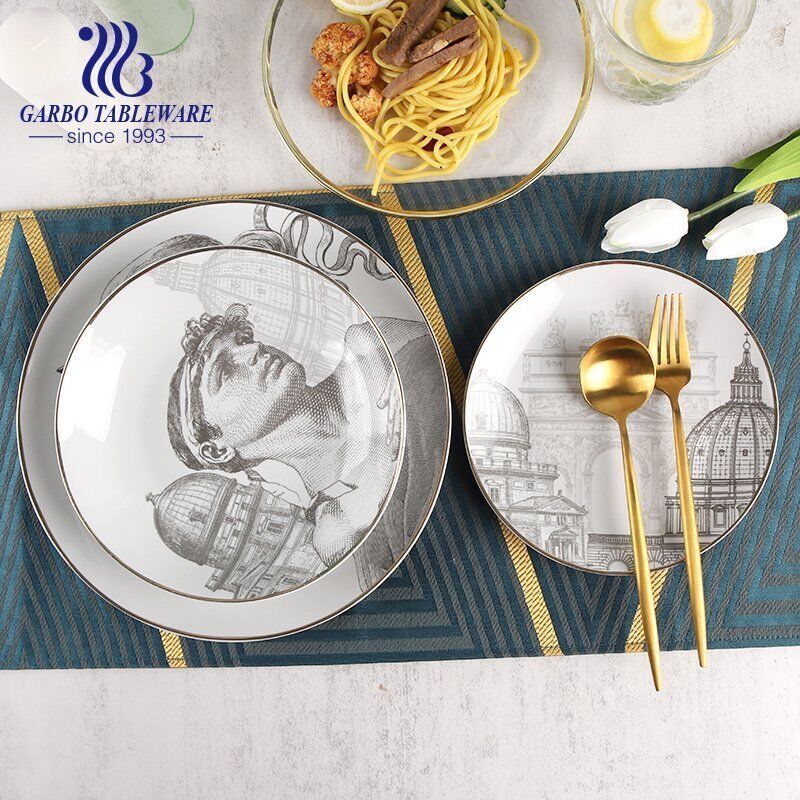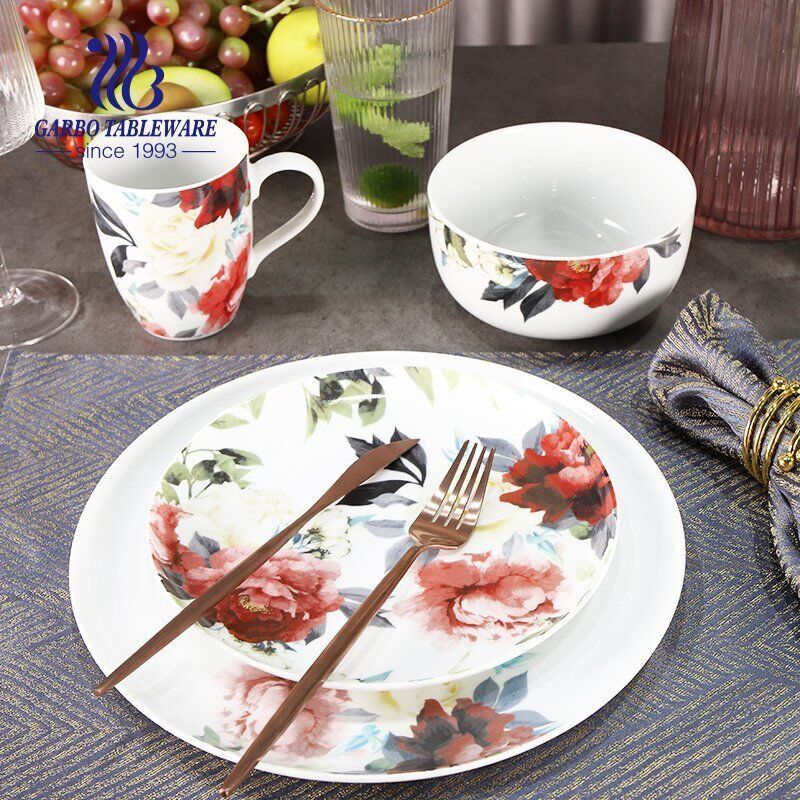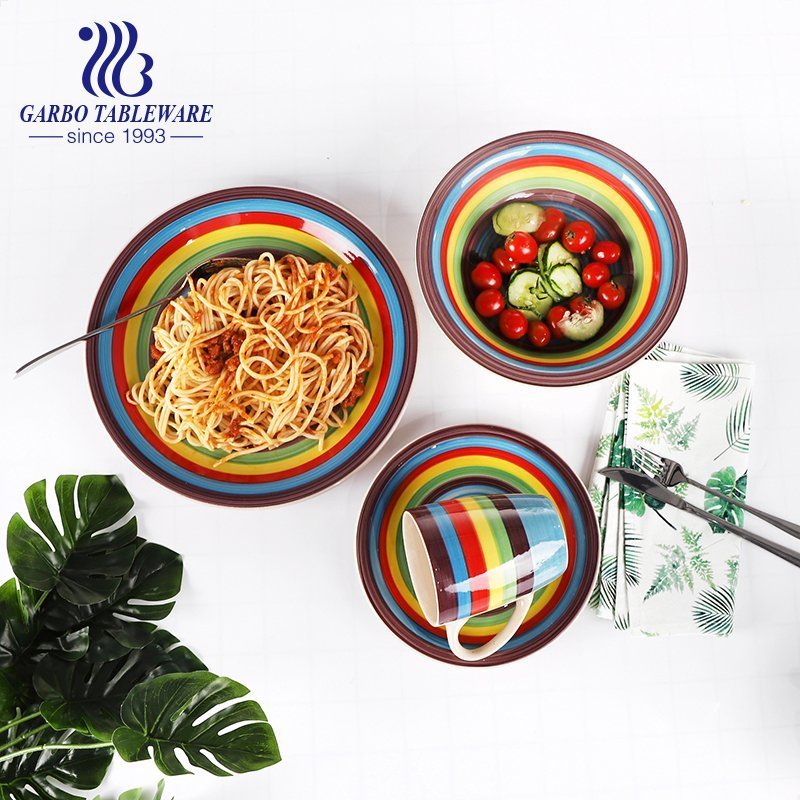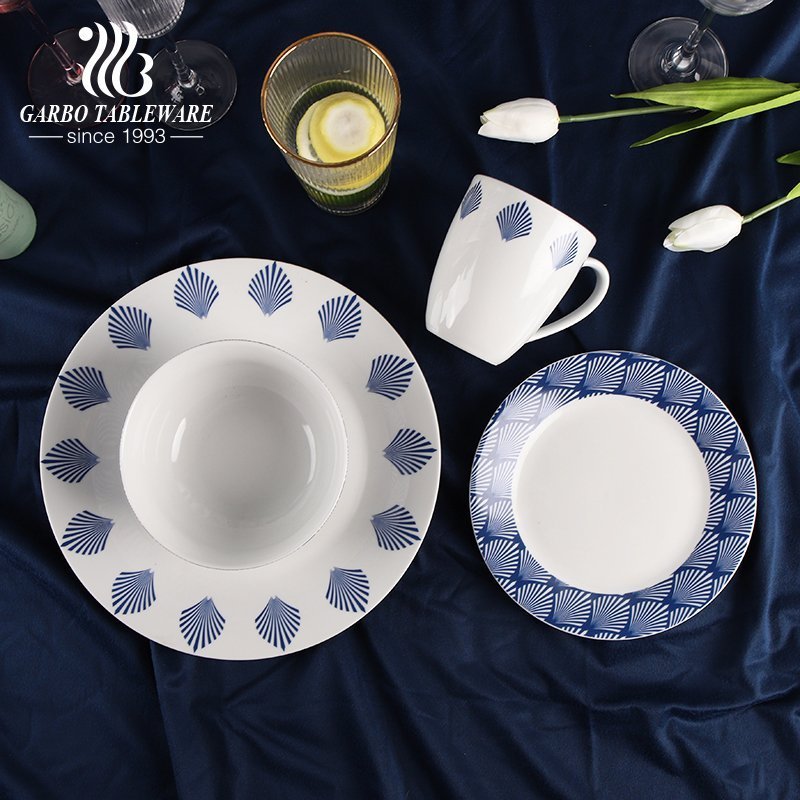Pulished on Mar. 02, 2023
Ceramic tableware is now widely used in our daily life. It can be said that everyone’s life is inseparable from ceramics, whether it is the bathroom, tableware, or even living utensils.
There is no doubt that ceramics are an inseparable part of human life. The ceramic tableware can be just white color, single color, or several colors, with wonderful customized design on the plate surface.
Do you know how the ceramic tableware comes into like that? Garbo tableware expert gives us an answer below information.

The differences in Post-processing for the ceramic tableware are as below.
Post-processing: bare body. white porcelain and magnesia porcelain has a flaky structure, which is easy to become flaky when broken, and it is not easy to be crushed. (This kind of ceramic tableware is generally used for daily use in hotels/restaurants). Below porcelain items are the top-rated hotel items with Garbo’s clients. It is with a favorable price list and good quality.

Post-processing: (decals) roasted flowers The products are burned at 700~850℃. Because the firing temperature does not reach the melting temperature of the glaze layer, the flower surface cannot sink into the glaze, but can only stick to the surface of the glaze layer. If you touch it with your hand, the surface of the product has a bumpy feeling, and you can observe the uneven color printing with the naked eye (burning 2 times can also be called the upper color)

Post-processing (color-glazed ): The ceramic tableware can be with various colors for choice. There are more than 20 color combinations, including the single-color glaze, tea powder glazed, gold star glaze, “raindrop red” and other color-changing artistic glazes in Garbo’s factory production line. The above crafting of colors is widely used on the daily utensils, vase flower arrangements, colored glaze hangers, and craft furnishings decorated with them. The ceramic products are pleasing to the eye and are called “pottery in gorgeous clothes”.

System deep processing ( under glazed printing): Underglaze color refers to the first hand-painted or machine color-printed pattern on the semi-finished blank, and then glaze is applied and fired in a high-temperature kiln. After firing, the pattern is covered by a layer of transparent glaze film, which is crystal clear. For the under-glazed printing, the design is not allowed with more than 3 colors. Since it is the machine made for the under-glazed design printings.
Our Garbo Ceramic tableware can accept your customized design on the ceramic tableware. We are always here to support you.